Simple. Leaner. Unified.
Ensure no data goes to waste with a simpler, leaner, unified stack that makes your applications hum like a Ferrari.

APPLICATION-LEVEL FEATURES AND BENEFITS
- Ultra-Reliable Low
Latency - Stream
Integration - ACID-Compliant
Transactions - Intelligent Real-time
Aggregations - Horizontal
Scalability
Ultra-Reliable Low Latency To Align With 5G Slas
5G, combined with IoT and machine-to-machine communication, is making life almost impossible for legacy tech. To meet the SLAs of 5G, especially around BSS and customer management, your applications need to be able to go from ingest to decision in under 200 milliseconds, which means the decisioning part needs to happen in under 10 milliseconds, without compromising on data accuracy.
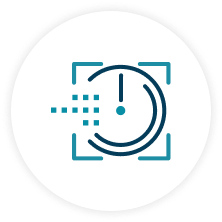
Stream Integration To Make In-Event Decisions Based On Multiple Streams Of Information
Today’s data comes in fast and varied from highly distributed sources. Stream processing technology allows you to process, store, analyze, and most importantly, act on data streams in real time. Legacy batch data processing methods require data to be collected in batch form before it’s processed, stored, or analyzed, whereas streaming data flows in continuously, allowing you to handle it in real time without waiting for it to arrive in batch form.
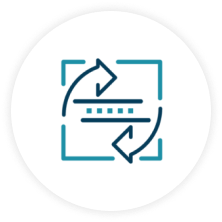
Acid-Complaint Transactions To Process Data And Make Complex Decisions In A Consistent Manner
ACID compliance is key for consistency. If 5G is making everything faster, it becomes that much more important—and that much harder— to ensure consistency without sacrificing something else, like speed or data platform performance. Most NoSQL-based data platforms will fail in one or more of the ACID requirements, and thus fail to meet the data consistency requirements of many if not most of today’s enterprise applications.
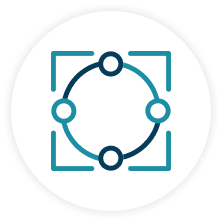
Intelligent Real-Time Aggregation To Measure, Monitor, and Detect Deviations In Important KPIS
At the heart of any powerful 5G application is an ability to make complex decisions using both historical and near-recent records to attain a nuanced understanding of an event and act on it in the best way possible, according to your unique business needs and KPIs. Most data platforms—especially those using legacy or NoSQL database technology—focus on either historical data or recent data, without aggregating them for a holistic view.

Horizontal Scalability To Support The Increasing Volume And Variety Of Data, Without Compromising On Latency
ACID compliance is key for consistency. If 5G is making everything faster, it becomes that much more important—and that much harder— to ensure consistency without sacrificing something else, like speed or data platform performance. Most NoSQL-based data platforms will fail in one or more of the ACID requirements, and thus fail to meet the data consistency requirements of many if not most of today’s enterprise applications.
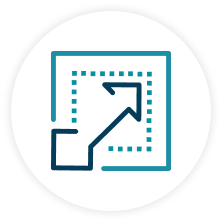
Operational-Level Features & Benefits
- Cloud
Native - High
Availability - Active-Active Cross Data
Center Replication - Disk
Persistence - Stack
Simplification
Cloud Native To Build Competitive Advantage From Agility And Automation
Cloud-native architectures take full advantage of the distributed, scalable, flexible nature of the public cloud to maximize your ability to create business value and keep customers happy. Going cloud-native means shedding many layers of infrastructure—networks, servers, operating systems etc.—to accelerate the development and deployment of new services by enabling practices such as continuous integration and deployment and the ability to rapidly scale resources up or down for real-time resource optimization in response to traffic spikes and one-time events.

High Availability To Ensure Business Continuity In The Face Of Hardware Failures
Competent, customer management, BSS, and revenue assurance in the age of 5G means no service failures. Your customers stay happy and loyal, and you head off fraudsters before they have a chance to wreak havoc inside your networks. With high availability, you reduce the negative impacts of downtime and implement automatic recovery from system failures, translating into better ROI and ultimately a more robust bottom line.

Active-Active Cross Data Center Replication To Provide Geographically Distributed Resiliency To Support 5G-Grade Quality Of Service
While many data platforms and database technology companies offer some form of cross data center replication, not many offer true active-active cross data center replication, which means using two databases,
both of which can be changed in real time, and both of which propagate their changes to each other, thus avoiding issues around conflict resolution, which significantly impact application performance and ultimately your ROI.
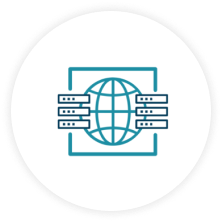
Disk Persistence To Ensure You Never Lose Data
Disk persistence means that the data survives after the process with which it was created has ended. Disk persistence ensures data storage after the system you’re using is powered off, meaning you are getting the most possible value from your data and not letting any of your data go ‘dark’.

Stack Simplification To Reduce Costs And Improve Data Processing Performance Through A Simplified Infrastructure With Fewer Layers
Every layer in a stack adds latency. Adding more layers worked well to address all types of data ingestion and analysis issues until 5G and IoT came along and applications could no longer afford to take their time on mission-critical decisions. The less layers you have, the less latency you are introducing to your stack. Volt Active Data allows you to simplify your stack to manage ingest-to-action to action in under 200 milliseconds.



